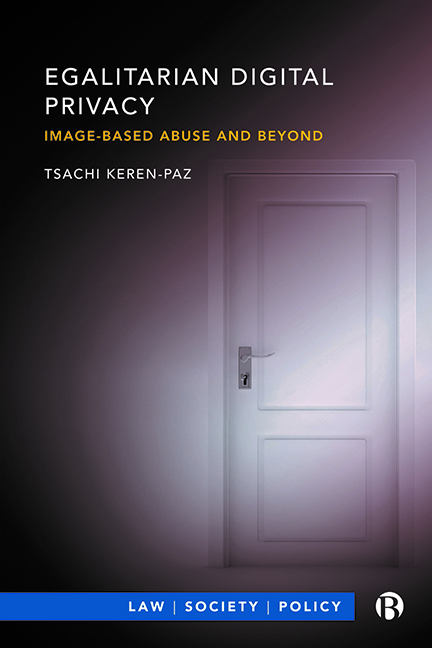Book contents
- Frontmatter
- Dedication
- Contents
- Acknowledgements
- Series Editor’s Preface
- 1 Introduction
- 2 Setting the Ground: The Intermediary Liability Debate and Framing Issues
- 3 First Principles and Occupiers’ Liability: The Case against Immunity
- 4 Property and Privacy: The Case for Strict Liability
- 5 Property and Privacy: Objections and Possible Extensions
- 6 The Policy Debate: Uniqueness of Harm from NCII
- 7 The Policy Debate: Freedom of Expression and Financial Costs of Filtering
- 8 The Easy Case for Viewers’ Liability: Child Pornography and Apportionment of Liability
- 9 Viewers’ Liability: Intention and Objective Fault
- 10 The Power of Property: Strict Liability for Viewing NCII
- 11 Scope of Liability for Breaches of Privacy
- 12 Is Suing Viewers Practicable?
- 13 Conclusion
- References
- Index
3 - First Principles and Occupiers’ Liability: The Case against Immunity
Published online by Cambridge University Press: 17 January 2024
- Frontmatter
- Dedication
- Contents
- Acknowledgements
- Series Editor’s Preface
- 1 Introduction
- 2 Setting the Ground: The Intermediary Liability Debate and Framing Issues
- 3 First Principles and Occupiers’ Liability: The Case against Immunity
- 4 Property and Privacy: The Case for Strict Liability
- 5 Property and Privacy: Objections and Possible Extensions
- 6 The Policy Debate: Uniqueness of Harm from NCII
- 7 The Policy Debate: Freedom of Expression and Financial Costs of Filtering
- 8 The Easy Case for Viewers’ Liability: Child Pornography and Apportionment of Liability
- 9 Viewers’ Liability: Intention and Objective Fault
- 10 The Power of Property: Strict Liability for Viewing NCII
- 11 Scope of Liability for Breaches of Privacy
- 12 Is Suing Viewers Practicable?
- 13 Conclusion
- References
- Index
Summary
Introduction
My main goal in this chapter is to establish that any immunity beyond the point of notice – a failure to remove the offending content within a reasonable period of time after notice – cannot be reconciled with first principles for imposing liability in torts for the actions of another and with similar situations in which such a question was raised. The relevant first principles are (1) the defendant’s control over the harming activity, (2) fairness – the fact the harm to the claimant was inflicted as part of the defendant’s business, that is, within a profit-motive context and (3) not imposing liability on the defendant would undermine the claimant’s ability to have an effective remedy for the harm she suffered and therefore undermines the claimant’s access to justice. The areas of law establishing liability for post notice failure to avoid the harm from activity directly authored by a third party are: the requirement for publication in defamation law both in the contexts of (1) a secondary publisher and the defence of innocent dissemination; and (2) publication by omission; and the liability of an occupier of land to (3) harms suffered on his land under the tort of negligence; and (4) harms to neighbouring lands under the tort of nuisance. Such liability is possibly conditioned on the burden from intervening being not excessive. I will thus criticize the complete immunity enjoyed by internet service providers for user content according to S230 Communications Decency Act 1996 (CDA), which governs also claims for NCII. S230 leaves claimants who gave notice to the ISP at the mercy of ISP’s discretion whether to leave the content or not and protects ISPs from good faith removal of content.
Part 2 will explore the different contexts in which post notice liability is imposed on offline intermediaries for third parties’ actions and will explain it as a matter of control and knowledge. Part 3 will turn to the role of the burden in delineating intermediaries’ liability.
- Type
- Chapter
- Information
- Egalitarian Digital PrivacyImage-based Abuse and Beyond, pp. 28 - 53Publisher: Bristol University PressPrint publication year: 2023



